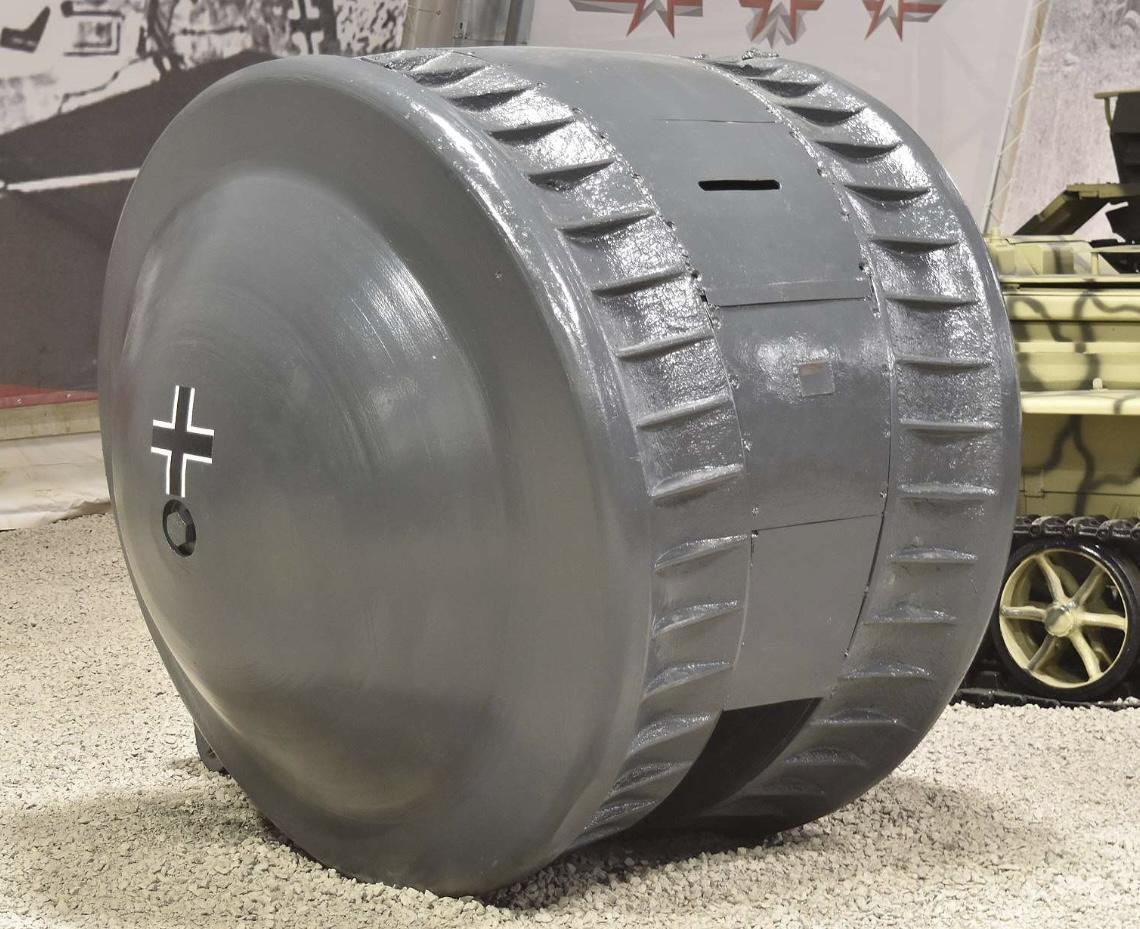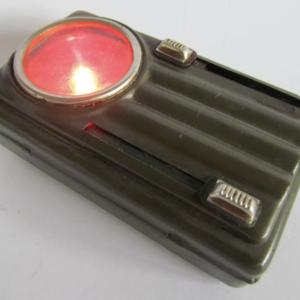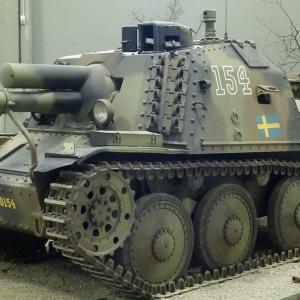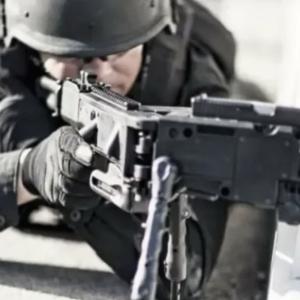
Kugel Panzer Ball Tank
The Kugelpanzer, often referred to as the "ball tank," is one of the most unusual and enigmatic armored vehicles to have emerged from the World War II era. Built by Nazi Germany, likely by the arms manufacturer Krupp, the tank’s design and purpose remain largely shrouded in mystery due to the absence of official documentation. Only one example is known to exist, and it raises more questions than it answers.
The vehicle is extremely compact and lightweight compared to conventional tanks. Its armor is estimated to be just 5 mm thick, which would have made it vulnerable to even small arms fire, indicating that it was not intended for front-line combat. The Kugelpanzer is believed to have been designed to hold a single crew member, who sat within a small central compartment inside the spherical body. Access to the interior was through a hatch located at the rear of the vehicle, and visibility was provided through a narrow vision slit at head level.
Propulsion was provided by a small single-cylinder two-stroke engine, likely producing around 25 horsepower. The Kugelpanzer could move at speeds of up to 8 kilometers per hour under ideal conditions. Its most distinctive feature was its method of movement: the tank rolled on two large, hemispherical wheels that made up its outer shell. A small tail wheel at the rear provided additional balance and steering capability. The unusual design allowed the vehicle to roll forward and backward but offered limited maneuverability.
The purpose of the Kugelpanzer remains speculative. Some theorists suggest it was intended as a reconnaissance vehicle, capable of moving under light fire to scout enemy positions. Others have proposed alternative roles such as cable-laying, artillery spotting, or psychological warfare. There is also speculation that it was simply an experimental or prototype concept with no intention of mass production or deployment. What is known is that the vehicle was extremely limited in capability and offered little in terms of protection or firepower.
As for armament, the surviving example of the Kugelpanzer has no weapons. There is a small opening or slit in the front which some have interpreted as a potential mount for a light machine gun, such as the MG 34, but it has since been welded shut. It is uncertain whether the vehicle was ever armed or even designed to carry weaponry at all.
The only surviving Kugelpanzer was captured by Soviet forces during World War II. Most reports suggest it was found in Manchuria, possibly having been transferred to the Japanese under a military technology exchange agreement between Nazi Germany and Imperial Japan. After its capture, the Soviets transported it back to Russia, where it was placed in a military museum for study and display.
Today, the sole example of the Kugelpanzer is housed at the Kubinka Tank Museum, located just outside Moscow. It is part of their collection of rare and experimental armored vehicles. However, access to the interior of the vehicle is restricted, and many components, such as the engine and internal systems, have been removed. The museum does not provide detailed technical information, which adds to the intrigue and mystery surrounding the vehicle.
Despite decades of curiosity, the Kugelpanzer remains a puzzle from a bygone era. With no surviving blueprints or official records, it stands as a strange relic of wartime experimentation—an armored sphere whose true purpose and potential may never be fully understood.










